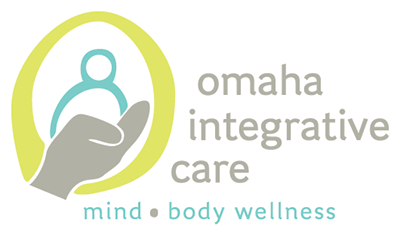
When the idea of Omaha Integrative Care first emerged, I knew in my heart I knew that the business side of it would need to be structured differently from typical small healthcare practices. True integrative healthcare is an organic process rooted in a relationship between patients and providers. It creates a system or team of people who bring forth their unique gifts for the benefit of the patient, including the patient’s inherent healing capacities. When ego and competition are set aside, intersecting roles present themselves and evolve as needed.
In our practice, a common scenario starts with someone seeing a mental health provider. As mental health symptoms often impact and are impacted by physical symptoms, it is common to identify co-existing issues. Anxiety or depression may be intertwined with inflammatory diseases or chronic health concerns. The therapeutic relationship expands to a team of providers which may include an occupational therapist, a prescribing provider and an acupuncturist. The treatment becomes something of a healing blend of talk therapy, movement, lifestyle change and possibly medication or other treatments.
Knowing the power of parallel process – the phenomenon of groups of people in systems thinking and behaving in similar ways – I instinctively knew a hierarchical model of business would undermine the essence of an integrative healthcare practice. After many years and attempts at different models, collective leadership has shown to be the best fit for supporting and nourishing a healthcare system.
Although collective leadership may sound like a utopian idea, it is actually quite practical. It acknowledges the leadership that each individual can each embody in various ways, relying more on roles and responsibilities rather than a chain of command. Currently in the United States, there are approximately 10 administrators for every physician. In collective leadership, the need for administration is reduced, and there is an increased commitment to a system that works towards a shared goal – providing the best care to patients/clients. Best care cannot happen in silos. Working collectively brings efficiencies and significant health benefits.
We have learned that breaking down the silos between finance, administration and providers allows us to know the humans we work with better and provide better care. By further dissolving the boundaries between medical and behavioral health, as well as licensed and non-licensed providers, we enhance our experience and knowledge. We work smarter, not harder.
Similar to the patient-provider relationship, working within a collective leadership model requires an investment by both parties in order for it to function. Someone who is not ready to actively participate in their own healthcare will benefit less from the treatments offered. Engaging in collective leadership demands courage and vulnerability to find one’s role and contribute their gifts to the system. But when achieved, it becomes a beautiful container for healthcare, defined by the unique intersection of each patient/client and their care team members.
I will end by saying collective leadership is not an easy model. Hierarchy often provides a sense of ease because it is what we have always known and because it simply shifts responsibility up the chain of command. In hierarchy, when shit goes bad we look for someone to blame and someone to fix it – reflecting an American attitude towards health. In collective leadership, when things go wrong, we look inward and examine the system to learn and improve. This approach aligns with an integrative and preventive approach to health.
We are constantly growing our team. If you are interested in being part of our collective work, see our current openings.

Connect With Us